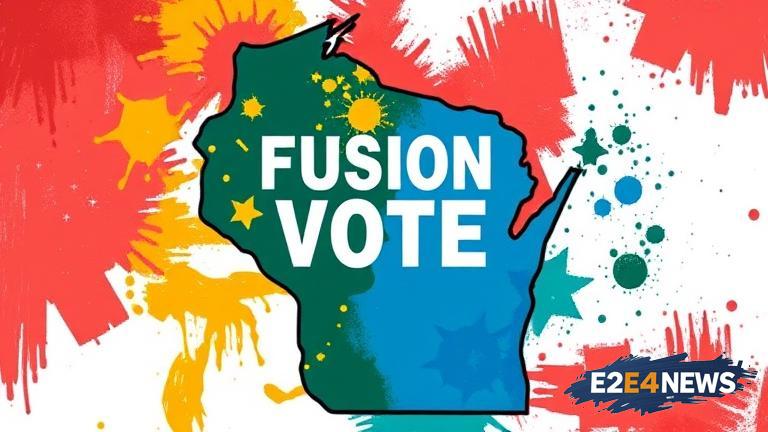Fusion voting, also known as cross-endorsement voting, has been gaining attention in Wisconsin as advocates push for electoral reform. The system allows voters to cast ballots for multiple parties, giving them more flexibility and choice in the voting process. This approach has been used in other states, such as New York and Connecticut, and has been shown to increase voter turnout and reduce partisan polarization. In Wisconsin, advocates argue that fusion voting could help to break down the state’s highly partisan political landscape and give voters more options at the polls. The system would allow voters to cast ballots for both a major party candidate and a third-party candidate, giving them more flexibility and choice. This could be particularly beneficial for voters who feel that the major parties do not adequately represent their views. Fusion voting has been used in other countries, such as Germany and Australia, and has been shown to promote more proportional representation and reduce the dominance of major parties. In Wisconsin, the push for fusion voting is being led by a coalition of advocacy groups, including the Wisconsin Democracy Campaign and the League of Women Voters. These groups argue that the current electoral system is broken and that fusion voting could help to increase voter engagement and participation. They also argue that the system would give voters more options and allow them to express their true preferences, rather than being forced to choose between two major party candidates. The advocates point to the success of fusion voting in other states, where it has been used to elect candidates who might not have been viable under the current system. They also argue that the system would help to reduce the influence of money in politics, as candidates would no longer need to rely on major party funding to be competitive. Despite the potential benefits of fusion voting, there are also challenges and criticisms of the system. Some argue that it could lead to confusion among voters, particularly in states with complex electoral systems. Others argue that it could give an unfair advantage to certain candidates or parties. However, advocates argue that these concerns can be addressed through education and outreach efforts, and that the benefits of fusion voting outweigh the potential drawbacks. In Wisconsin, the push for fusion voting is part of a broader effort to reform the state’s electoral system and increase voter participation. The state has been at the forefront of electoral reform efforts in recent years, with advocates pushing for changes such as automatic voter registration and redistricting reform. The fusion voting effort is seen as a key part of this broader movement, and advocates are hopeful that it could help to increase voter engagement and participation in the state. As the debate over fusion voting continues, it is clear that the system has the potential to make a significant impact on the electoral landscape in Wisconsin. With its potential to increase voter choice and reduce partisan polarization, fusion voting is an idea that is worth considering. Whether or not it is ultimately implemented, the push for fusion voting is an important part of the broader conversation about electoral reform and voter participation in Wisconsin. The state’s advocates are committed to continuing their efforts to promote fusion voting and increase voter engagement, and it will be interesting to see how this effort develops in the coming months and years. As the state moves forward, it is clear that fusion voting will be an important part of the conversation about electoral reform and voter participation. With its potential to increase voter choice and reduce partisan polarization, fusion voting is an idea that is worth considering. The push for fusion voting is a key part of the broader movement to reform the state’s electoral system and increase voter participation, and it will be interesting to see how this effort develops in the coming months and years.




